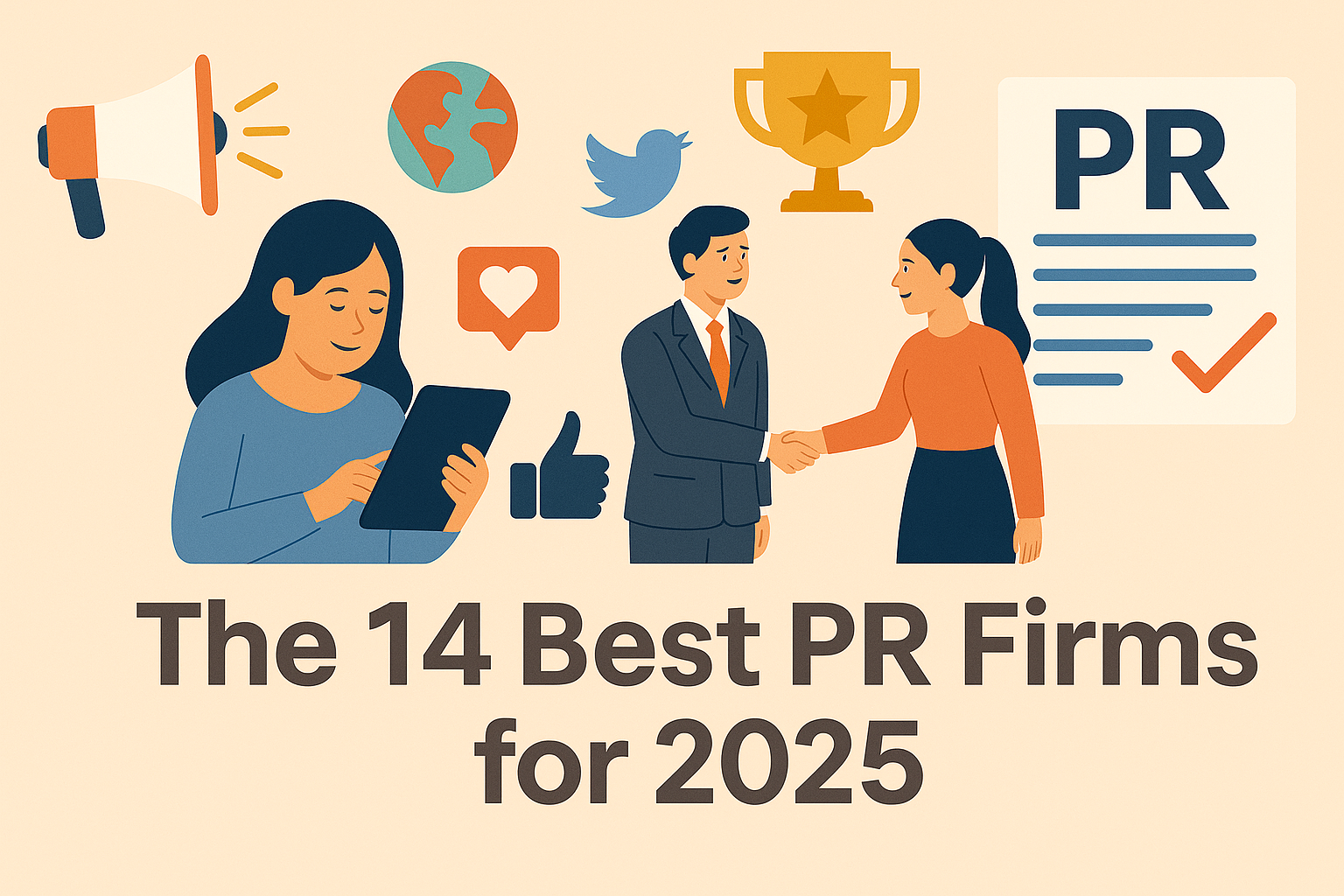Being recognized as an industry thought leader means you’re not just known; you’re known for your insights, market intuitions, and your ability to lead the industry. Your brand becomes a trusted go-to resource. This trust is gold in the world of brand promotion. It’s much more valuable than just being seen—it’s about being a respected and sought-after subject matter expert.
Another unique differentiator? Thought leadership isn’t about selling; it’s about starting a caliber of conversation that engages target audiences and makes industry waves. Whether you’re addressing fellow leaders or potential customers, these audiences don’t just buy from you, they buy into your vision. They trust your expertise and feel confident in your market position.

And let’s get real—when your brand talks, you want people to listen, right? Thought leadership ensures your brand’s voice cuts through the chaos. That’s the kind of influence that can elevate your entire marketing game.
Being seen as a brand leader in your field also has its perks. It draws in wider audiences and builds customer loyalty. Top talent and potential partners start gravitating toward your brand because they want a piece of the action. They see you setting trends and they want in, which further builds your influence. In short, thought leadership is an essential in the world of brand-based marketing.
Let’s take a deeper dive into the how-to’s and benefits of smart thought leadership marketing. Related Reading: The Ultimate Guide to Thought Leadership
How to Become a Thought Leader

At Zen, when we aim to transform a business leader into a thought leader, we first learn what sets you apart from your competitors. It’s not just about what products or services you offer; it’s about the vision, the innovation, and the values that drive your brand. It’s your distinct market differentiator and Zen knows how to listen for this.
Once we’ve identified the unique aspects of your brand, the next step is to craft a persona that embodies this thought leadership identity. This goes beyond the personalities of your executives and encompasses your entire brand voice. It’s about being seen as the go-to source for insights, trends, and commentary in your industry. Our brand promotion marketing strategy revolves around positioning our clients not only as sellers, but as sages—wisdom-bearers in their field who can lead conversations and influence trends.
The perfect example of the journey to becoming a thought leader is exemplified by our client New Cosmos and their experience at the Consumer Electronics Show (CES). As a Japanese company eager to introduce their innovative natural gas detector to the U.S. market, there was a hitch: launching against a backdrop of nearly 300 annual natural gas explosions in U.S. homes. They needed to not only promote their DeNova Detect device, but also shift perceptions about the safety of natural gas appliances.
Our approach? We first zeroed in on trade outlets passionate about appliance safety, setting the stage with a target audience ready to listen. Next, we took New Cosmos executives, equipped them with top-notch media training, and positioned them as the “voice of reason” in a sea of concern surrounding natural gas products.
Related Reading: Why Your C-Suite Should Be Thought Leaders
The impact? Suddenly, the DeNova Detect wasn’t just another product—it was the product at the heart of a much-needed dialogue on safety. The buzz created led to a series of deals with major retailers, and the movement caught the eye of the Las Vegas mayor’s office, culminating in the declaration of January 6 as Natural Gas Safety Awareness Day.
How do you make sure people are listening?

It’s one thing to have something to say, but how do you make sure the right people are listening?
It might feel counterintuitive, but sometimes, smaller is smarter. Instead of gunning for those big, flashy tier-one press hits right out of the gate, consider the power of a highly engaged, niche target audience. These smaller groups are often more invested and more likely to interact with your content, share it, and advocate for your brand. They’re the ones who can carry your message forward, amplifying it in circles that matter most. Digital marketing and social media platforms are critical to make this happen, so it’s beneficial to build a strong social media presence to better engage with your audience.
But let’s not hang up on traditional media just yet. Print publications, TV spots, and radio can add a layer of credibility and authority to your thought leadership efforts and extend the reach of your marketing efforts beyond the digital landscape. Striking the right balance between the two can supercharge your visibility and impact, ensuring you’re heard loud and clear across all channels.
Remember, thought leadership isn’t a hit-and-run affair. It’s about laying down roots, growing your influence, and building a lasting relationship with your target audience through your content marketing strategies. This means consistently delivering value, staying ahead of industry trends, and being a reliable source of insight and inspiration.
Over time, this commitment to quality and relevance builds a level of trust and reputation that money can’t buy. It’s what transforms a one-time listener into a lifelong follower and advocate for your brand.
Related Reading: Enhancing B2B Thought Leadership with AI-Driven Content Discovery and Curation
How do you know your thought leadership is successful?

Navigating the impact of thought leadership on brand promotion can feel like trying to read tea leaves at times—how do you know if your efforts are truly making a difference and reaching your business goals?
The truth is, the success of thought leadership doesn’t always shout its arrival with big, bold numbers. Sometimes, it’s the quiet changes, the gradual shifts in perception and engagement, that tell you you’re on the right track to becoming an industry leader.
So, let’s break down how to measure the sometimes subtle, but always significant, effects of thought leadership on your content strategy.
Engagement Over Volume

True thought leaders know it’s not just about how many people you’re reaching, but how deeply you’re connecting with them. Are they commenting on your posts, sharing your content, or mentioning your brand in industry discussions? (And that’s not even touching on dark social, all those untraceable interactions between people that we can’t quantify!) High engagement rates, especially with valuable content that positions your brand as a thought leader, indicate that your audience isn’t just hearing you—they’re listening and valuing your insights.
An increase in customer engagement isn’t just a reflection of your social marketing strategy, it points to business growth potential. Sharing across social media channels is one of the easiest ways to expand your customer base and reach potential clients. But remember, it’s the way the audience engages that matters.
Be sure your digital marketing strategy prioritizes a strong customer experience and a steady stream of meaningful content that aligns with your thought leadership. And be available to your audience. Start a livestream, host an AMA session, create polls. Leverage social media marketing by encouraging your audience to engage with you.
Quality of Conversations

Are industry peers referencing your content in their discussions? Have your insights sparked industry debates or been cited in other thought leadership pieces? These are the markers of true thought leadership. The quality and depth of these conversations are a testament to your brand’s influence and the respect it commands in your industry.
It’s becoming increasingly more challenging to reach these levels of awareness. This is because we are in the era of content creation, where anyone can build a brand, and adding AI into the mix means we won’t be stopping any time soon. By creating valuable content, you and your brand are better primed to stand out and drive meaningful conversations across your marketing channels.
How can you stand out? Ask and answer the tough questions. Share your opinions and support them with strong evidence. Lean on your expertise to gauge the latest trends shaping the industry and build marketing campaigns around them. Conduct interactive communications campaigns across your social media networks. Be available, knowledgeable, and clear in your identity. Your voice is stronger and more credible when you know how to use it.
Lead Quality and Conversion Rates
While thought leadership isn’t a direct sales tool, it does influence the sales funnel. By tracking leads that come through thought leadership channels—be it a webinar, a white paper, or an insightful blog post—you can assess how your efforts are affecting brand promotion. High-quality leads that show a deeper understanding of your value proposition and a readiness to engage are signs that your thought leadership is resonating.
LinkedIn is a valuable platform for combining sales and thought leadership because it allows brands to try different outreach methods. Ads on LinkedIn give you the benefit of boosting your expertise to broader or targeted audiences through more authentic interactions. Brands can then boost posts from thought leaders to organically enter trending topics and relevant industry conversations.
As trending topics take over LinkedIn or industry news breaks, thought leaders can join relevant conversations freely, using their credibility to stand out and encourage more engagement. LinkedIn also gives B2Bs more opportunities to network and find the right audiences. Thought leaders covering niche topics can easily find their people, while brands looking to expand their reach can still home in on specific sectors within those larger target markets.
Along with LinkedIn, most platforms provide analytics and awareness metrics, enabling thought leaders to analyze results and adjust accordingly. When that data is assessed by both sales and content marketing teams, it helps brands better identify leads, conversion points, and key patterns.
Related Reading: How to Leverage Thought Leadership Ads on Linkedin
Brand Sentiment
Brand sentiment is a big deal to marketers. When you know what people are saying about your brand, you’re better prepared to shape and drive your thought leadership narratives in more informed and effective directions. Do people like your brand? Is your brand trustworthy? What is your brand’s reputation?
Thought leadership plays a valuable role in establishing brand sentiment. And there are ways companies can proactively position all thought leadership efforts for success.
First, PR teams can conduct media training with your designated executives or subject matter experts–to ensure they are comfortable, confident, and capable of effectively delivering your company’s most important thought leadership narratives to key audiences.
PR teams can also gauge brand sentiment by monitoring conversations and coverage from press, influencers, and social media sites. They will listen for thought leadership alignment. If brand sentiment is poor in one area, PR teams can identify ways to bolster the narrative or change up the delivery channels to improve it.
Website Traffic and Time Spent

Increased traffic to your website, particularly to your thought leadership content, is a good indicator of success. But don’t just look at the numbers; consider how long visitors are staying on these pages. Longer dwell times suggest that readers find value in your content, engaging with it in a way that goes beyond a cursory glance.
And just like brand sentiment, website traffic can be tracked and analyzed to reveal engagement. Find out what content is driving and attracting visitors, what is inspiring engagement, and what can be shared. If your thought leader wrote a lengthy blog post or spoke on a panel that is receiving more clicks than usual, learn how to repurpose and reshare that information to increase interest and redirect consumers to your brand.
Ideas to do this include: turning this content into a downloadable PDF or an infographic, creating short videos, and reworking the main points into new pieces. This will not only continue to drive traffic to your site, but will keep consumers engaged for longer periods of time.
As you monitor shared thought leadership content, take into consideration the shares you can’t track. The dark social content that occurs in private messages, texts, emails, and across other untraceable platforms. For example, your team may be struggling with ways to grow your audience on TikTok. An approach can follow this scenario: the CMO posts a helpful how-to guide covering this topic on LinkedIn, and instead of commenting on the post directly, you share this in your team’s Slack channel and reference it as you build your own strategy. This is dark social in action; it is a creative way to build and amplify your B2B thought leadership strategy.
Even though you can’t easily track dark social sharing, you can adjust your marketing strategy to accommodate dark social and drive more traffic to your site. Use link shorteners (like bit.ly), create and emphasize social sharing buttons across your content, and implement dark social tracking tools. You can also build your own opportunities for dark social sharing by leaning on referral marketing, creating closed online communities, tapping into influencer marketing, and offering exclusive links or deals to those who share in private messages.
Related Reading: Finding the Right Platform for Your Thought Leadership: 6 Formats You Should Try
Influence on Industry Trends
When you become a thought leader, you aren’t just participating in the conversation, you’re leading it. If you find that your perspectives are being adopted, discussed, built upon, or are changing behavior within your industry, you are no longer just a voice in the crowd. You may be setting a new industry trend.
It all starts with crafting compelling messages that resonate with audiences. Is there a niche topic you can leverage to coin a new term? Can you identify catchy ways to clearly explain a complicated or technical process? Can you take one word of an acronym and swap it out for another one that better relates to your brand?
It is often this level of creative conceptualizing that can connect you to your audience and establish your point of view as the one to watch. When you can create a new phrase or become the go-to persona to cover a trend, that’s claiming an uncharted industry share of voice, and that’s the goal. Then, it cascades from there in repeated interactions between a buyer and a brand resulting in conversions that lay the foundation developing a loyal customer base.
Once you’ve found your voice, use it. Find ways to elevate your brand by sharing stories, relating to audiences, and connecting with key stakeholders across every possible platform. Brands succeed when they leverage thought leadership to guide, inform, and empower customers throughout every stage of the buyer journey.If you’re ready to elevate your brand and establish yourself as a thought leader in your industry, we’re here to guide you every step of the way. Reach out today.





